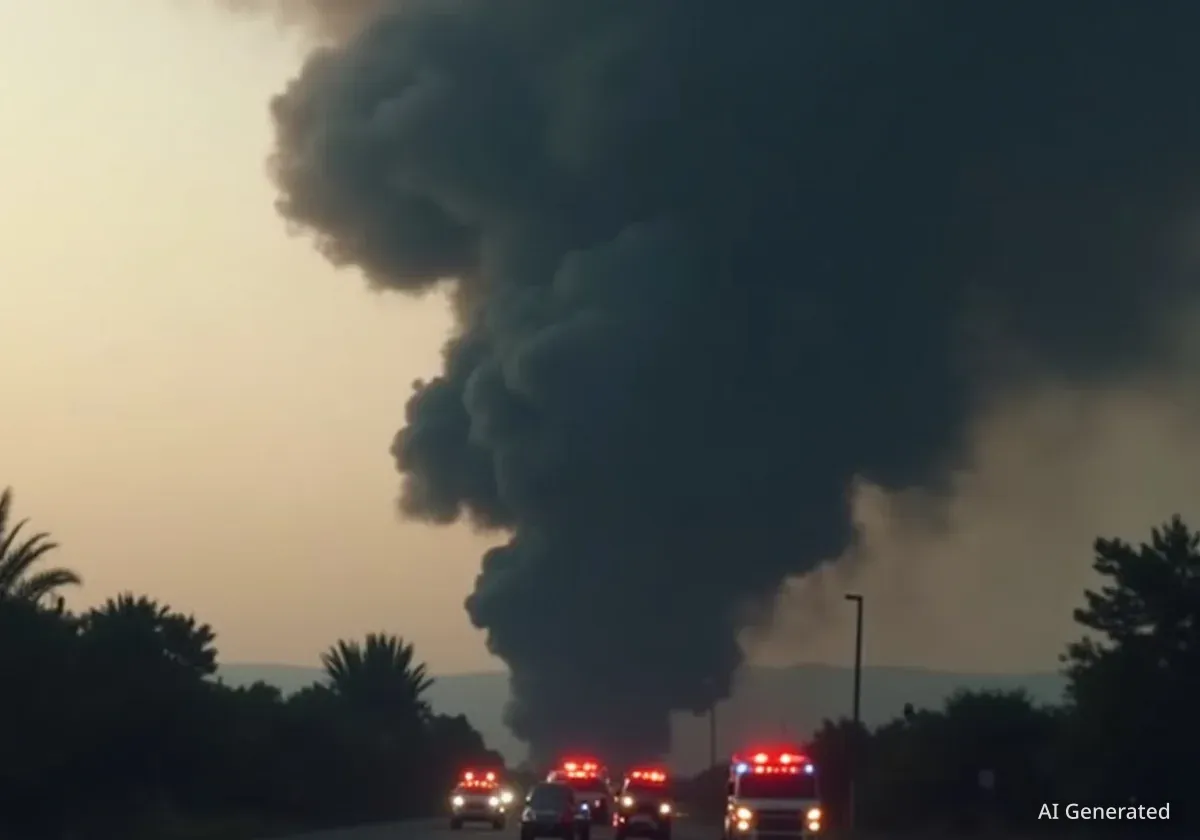The U.S. National Transportation Safety Board (NTSB) has launched an investigation into a serious near-miss incident involving a Southwest Airlines jet and a medical helicopter. The close call occurred on October 29 near Cleveland International Airport, forcing the commercial airliner to abort its landing. This event highlights ongoing concerns about air traffic safety, particularly the proximity of different aircraft types in busy airspace.
Key Takeaways
- Southwest Flight 1333 and a medical helicopter experienced a loss of separation near Cleveland.
- The incident occurred as the Southwest jet was on its final approach, prompting an aborted landing.
- The two aircraft came within 0.56 miles (0.9 km) of each other at 2,075 feet altitude.
- The NTSB is actively investigating the event, which follows other recent close calls.
- Air traffic control audio suggests a communication issue regarding the helicopter's flight path.
Details of the Cleveland Incident
The incident involved Southwest Flight 1333, a Boeing 737 traveling from Baltimore-Washington International Thurgood Marshall Airport (BWI), and a medical helicopter. Both aircraft were operating in the vicinity of Cleveland International Airport. The NTSB confirmed that the two experienced a loss of separation, meaning they came closer than the required minimum safe distance.
During its final approach, the Southwest pilot was forced to take immediate action. This involved aborting the landing to avoid a potential collision. The aircraft subsequently landed safely a short time later. Southwest Airlines issued a statement acknowledging the professionalism of their crew and confirming their cooperation with the NTSB investigation.
Incident Snapshot
- Date: October 29
- Location: Near Cleveland International Airport
- Aircraft Involved: Southwest Flight 1333 (Boeing 737) and a medical helicopter
- Closest Separation: 0.56 miles (0.9 km)
- Altitude: Both aircraft at 2,075 feet at one point
- Outcome: Southwest jet aborted landing, then landed safely.
Air Traffic Control Communications
Audio recordings from air traffic control, analyzed by aviation tracking website Flightradar24, shed light on the moments leading up to the near-miss. The recordings indicate that an air traffic controller instructed the medical helicopter to fly behind other traffic near the airport. However, the helicopter pilot requested a different trajectory.
The pilot responded,
"it would be better if we could go above it and in front of it if we can,"a request to which the controller then agreed. This exchange suggests a potential miscommunication or deviation from standard procedures that contributed to the reduced separation between the two aircraft.
Understanding Loss of Separation
Loss of separation is a critical safety event in aviation. It occurs when two aircraft come closer to each other than the minimum distance established by air traffic control regulations. These minimums are designed to provide ample time for pilots and controllers to react to unexpected situations, ensuring safe operations in the airspace.
Concerns Over Airspace Safety
This Cleveland incident is not isolated. It follows a series of recent close calls and a tragic mid-air collision that have raised significant concerns among U.S. lawmakers and aviation safety investigators. On January 29, a regional jet from American Airlines and a U.S. Army helicopter collided near Ronald Reagan Washington National Airport, resulting in 67 fatalities.
That earlier collision highlighted the dangers of inadequate separation between commercial flights and helicopters. According to a report from the Southwest captain to the Federal Aviation Administration (FAA), the Cleveland incident was described as "extremely close" and necessitated immediate evasive action to prevent a collision.
Previous Incidents and Regulatory Responses
The FAA has faced criticism for its perceived inaction on reported near-miss incidents prior to the January collision. Investigations into that crash revealed that the Army Black Hawk helicopter involved was flying above its permitted altitude.
- January 29 Crash: American Airlines regional jet and U.S. Army helicopter near Reagan National Airport, killing 67.
- May 1 Close Call: Near the Pentagon, forcing two civilian planes to abort landings, leading the FAA to bar Army helicopters from flying near the area.
- Historical Data: The NTSB disclosed in March that since 2021, there have been 15,200 loss of air separation incidents near Reagan National, including 85 categorized as close-call events.
In response to these events, the FAA modified helicopter routes last month. These changes specifically target the airspace near BWI, Washington Dulles International Airport, and Reagan National Airport, adding buffer zones to enhance safety. The ongoing NTSB investigation into the Cleveland incident will likely provide further insights into how such close calls can be prevented in the future.





